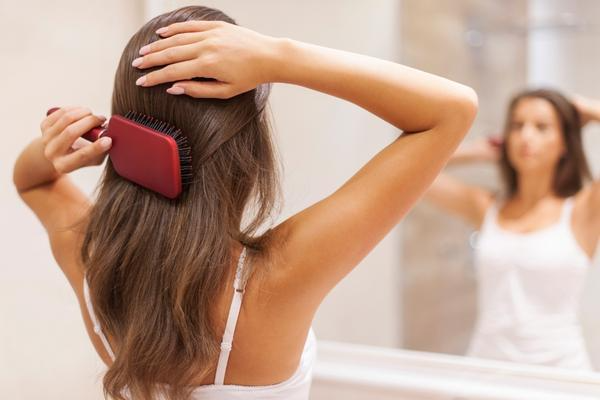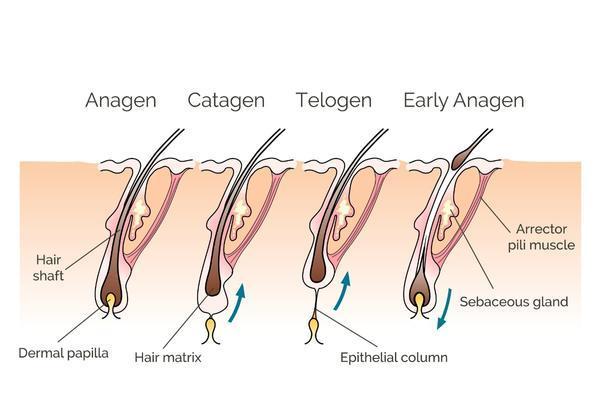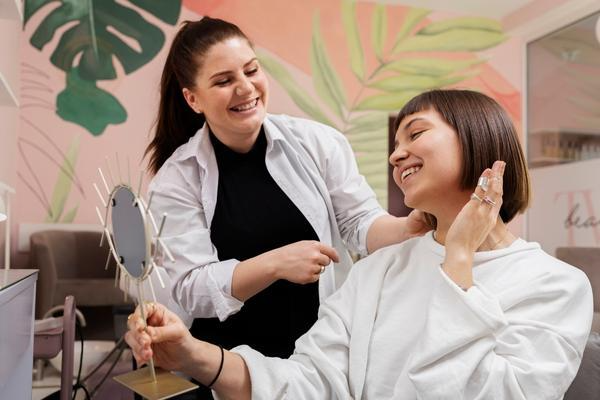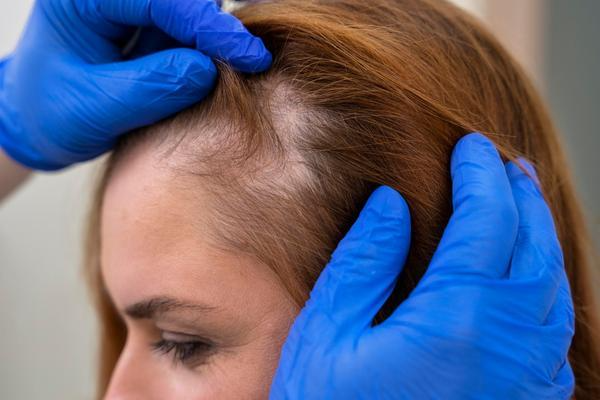Ultimate Guide in Understanding Hair Growth
Mar 24, 2023 | By Maria

The Ultimate Guide on Hair Growth: Everything You Need to Know for Healthy Hair Growth
Hair has been a part of grooming and presenting oneself for the longest time. It’s also a good indication of overall wellbeing and health. Having thick, luscious, shiny hair is something that is universally desirable for anyone who is growing out the hair on their head.
In this article, we'll dive into:
- Understanding Hair Growth
- How to Promote Hair Growth
- What are the Common Myths About Hair Growth
- Types of Hair Growth in Different Populations
- When to Seek Professional Help
- Treatment Options For Hair Loss
Thinning hair can be an indication of several things: stress, lack of nutrition, genetics, poor hair care, or some underlying health issue. It’s important to observe the normal rate your hair grows at and note if there are any sudden changes. If hair growth suddenly slows and results in significant hair loss and thinning, it can mean that you need to change something in your lifestyle. Getting to the root of things will be the best thing to do to determine what you need to subtract or incorporate in your lifestyle.

Having healthy, thick, shiny strands is an indication that your hair is getting the nutrition it needs. It’s also a way of making a good impression around other people. For the longest time, hair has been included in style, fashion, and grooming. Having nice hair can make the impression that you are put-together, well-groomed, clean, and healthy. This can help with both your professional life and personal life.
So, how can you make sure that your hair keeps growing at a healthy rate? There are a few things that you need to understand first so we can get to the solutions that address any issues you may be having. We’ll guide you through the anatomy and stages of hair growth, how you can promote hair growth, common myths, hair growth for different ethnicities, sexes, and ages, and when you need to seek professional help.
Understanding Hair Growth

Anatomy of Hair
Hair is made up of a material called keratin. This is a protein that also makes up the outer layer of your skin and your nails. There are many different parts that make up the anatomy of your hair but to understand how hair growth works, there are 6 main parts that you need to know about.
Hair dermal papilla
The first part is at the very root of the hair, inside the scalp. This is called the hair dermal papilla. This is where the very beginning stages of hair growth occurs. The papilla stimulates and works hand-in-hand with the bulb to produce the hair shaft
Hair bulb
The hair dermal papilla stimulates hair growth at the bulb of the hair where living cells divide and make up the hair shaft. It also serves as the base of the hair and keeps it on your head until the growth cycle naturally comes to an end.
Hair shaft
The hair shaft is the visible and exposed part of the hair that grows out of the scalp. This is what makes up the majority of your hair.
Hair cuticle
The hair cuticle is the outermost layer of the hair shaft.This is the layer that protects the inner layers of the hair and what typically needs to be strengthened in order to keep the hair strong, healthy, and shiny. Once the cuticle gets damaged, hair can easily break off.
Hair cortex
The cortex is the second and thickest layer of hair. The cuticle should be protecting the cortex to prevent breakage. This is also where the hair’s natural pigment is. That’s why typical permanent hair dyes absorb into the cortex to alter the hair’s color or deposit artificial pigments.
Hair medulla
This is the innermost layer of the hair and the most fragile part.
Stages of Hair Growth

There are 3 major stages of hair growth. This is a cycle that happens naturally during a period of time that differs from each individual. Hair goes through a growth, transition, and resting phase that causes the hair to grow, eventually fall out, and repeat the cycle.
Anagen
Anagen is the growth phase of the hair. This is when the hair is actively growing and the phase that lasts the longest. Anagen typically lasts from 3 to 5 years for most. It can last for up to 7 years or even longer for some lucky individuals.
Catagen
Catagen is the resting phase of the hair. This phase lasts the shortest out of the 3 main hair growth phases. This is when the hair has finished growing and detaches from the bottom of the hair follicle. It won’t fall out of the head just yet but it will stop growing and cells will shrink to prepare for the next phase. This phase lasts for only about 10 days or so.
Telogen
Finally, the last phase of the hair growth cycle: telogen. This is when the hair eventually falls out of the head. This stage lasts for about 3 months and 10% to 15% of the hair on your head are in this phase. That is why it’s normal to lose 100 hairs a day.
Factors That Affect Hair Growth
Hair growth can be affected by a number of factors and those factors can affect the hair simultaneously. These factors include stress, lack of nutrition, improper hair care, damage, genetics, medical issues, and even certain lifestyle choices. There are usually signs that manifest that may help you determine what is causing your hair loss.
Tips for Promoting Hair Growth

There are many ways you can help out your hair and boost growth. Some are even quite easy and simple to do. A few things incorporated and changed can mean significant hair growth that you’ve always wanted,
Diet and Nutrition
Most of the nutrition that hair gets comes from what you eat. Sure, hair care products and topical solutions can help but the most important part of hair health is helping it get the nutrition that it needs from your diet.
Make sure that your diet consists of whole, nutritious foods with lots of vitamins, minerals, protein, amino acids, and antioxidants. These foods include fatty fish, fruits, vegetables, lean meats, and whole grains. This means also staying away from unhealthy, junk foods such as anything greasy, processed foods, and empty calories.
Hair Care Routine
A hair care routine isn’t one-size-fits-all. Sometimes, it does require trial and error and knowing what’s best for your hair. Experimenting with different things and incorporating and subtracting products in your hair care routine will help you figure out what your hair needs. Try playing around with protein, moisture, amino acids, extracts, and more. Note any positive or negative changes to see what products work best for your hair.
Lifestyle Changes
Hair doesn’t only react to nutrition and care, it also is susceptible to certain habits and lifestyle choices. Smoking, stress, inactivity, excessive drinking, and other factors can cause hair loss too. To minimize hair loss and maximize hair growth, lifestyle changes like getting healthy and quitting bad habits can make a world of difference.
Supplements and Medications
Nutrient deficiencies are more common than you would think. Sometimes, you just can’t get everything you need just by eating a healthy diet. This is where supplements and medications can come in. Taking your vitamins and supplements daily can help a lot with managing certain deficiencies and boating hair growth.
Common Myths About Hair Growth

Cutting Your Hair Helps with Hair Growth
Cutting hair doesn’t exactly help with hair growth but it can help the hair. It won’t make your hair grow any faster but trimming dead or thin ends every couple of weeks can help the hair appear thicker and healthier. It can also help with tangles or matting.
Shaving Hair Helps with Hair Growth
Just like cutting your hair, shaving your hair won’t make it grow any faster or longer. The effect is the same with cutting hair but maybe just a bit more noticeable. Shaving the hair makes it have a thicker feel to it because if the blunt ends.
Air Drying is Helps Hair Grow Healthier
Air drying can be okay for some people who have quick-drying hair. However, for those with much thicker and less porous hair, air drying can take ages and can damage the hair more than just blow drying it. That’s because keeping the hair saturated with water makes it more fragile and can damage the inner parts of the hair. The best way to dry hair is to put your blow dryer on a cool setting. It’s also acceptable just to use heat and blow dry the hair as quickly as possible to avoid damage.
Hair Growth in Different Populations

Hair growth for men and women
Hair growth differs for men and women. Men usually grow hair much faster than women but they also lose it earlier in life. Women can also lose hair due to age but will typically not experience male pattern baldness. Women may also lose hair because of pregnancy, breastfeeding, and hormone changes.
Hair growth for different ethnic groups
Hair growth also differs for different ethnic groups. You may have already noticed that people from Asia can have straighter, shinier, and longer hair than other ethnicities, those with African heritage have curly to coily hair that can be coarse or drier in texture, and those with European heritage tend to have finer and lighter strands. Some may notice that Asian hair might grow faster than European hair but Caucasians tend to have more density. While African hair grows the slowest because of smaller diameter fibers.
Hair growth and age
Of course, hair growth and age are inevitably connected to each other. As we age, much like everything else in our body, hair growth slows down. This is completely normal but definitely an unfortunate part of aging. Thinning can start at around 40 years of age for women but can start earlier for both men and women. There are a number of different ways you can prevent this thanks to modern science.
When to Seek Professional Help

There are many different issues that could be causing your hair loss. While some hair loss might be normal for your age, ethnicity, genetics, and hair type, sometimes it may be an indication of another deeper issue. Getting professional help is definitely advisable if you want to know the best way to address your hair loss.
Indications for seeking medical help
Having some hair loss every day is completely normal. However, if you find that you are experiencing excessive, sudden hair loss. It may be time to get yourself checked out. If you haven’t damaged your hair from heat, chemical processes, or coloring, there should be no reason for your hair to fall out at such a rapid rate if you’re at a relatively young age.
Excessive hair fall can be an indication of high amounts of stress, a hormonal issue, nutritional deficiencies, and other medical issues. All of these can benefit from a prescription from a medical professional. Once you address the root of the problem, the hair growth is just an added bonus.
Treatment Options For Hair Loss

There are a number of different options for hair loss treatment now and it is up to you to decide which procedure suits your hair and lifestyle the best.
Hair transplant
This is the most major form of hair growth procedure out of all of them. This requires surgery and a specialist to be done properly. For this procedure, the doctor will surgically remove hair from the back of the head, bulb in tact, and transfer them to the area in which there is significant thinning.
This procedure is for those who want drastic, immediate change. Of course, there is still a process to it, but this is the fastest and most foolproof way to get growth in the places that you want.
This is not for those who are looking for an affordable and easy solution to hair loss. Transplants require time, money, and visits to a medical professional. To do this, you have to be fully committed.
Hair growth injections
Hair growth injections are just a step below hair transplants. This is another procedure that requires a medical professional but it is not as major as a hair transplant. These injections will take certain compounds from your blood and reformulate them into a customized serum especially for you and your hair.
This is another effective way to treat thinning hair especially at its early stages. If you already have some baldness, this isn’t the fastest nor most effective way to treat it but if the idea of having surgery isn’t for you, hair growth injections are a great alternative.
Hair growth injections are a bit more affordable than hair transplants, however, they also don’t come cheap. Hair growth injections are in the mid-range when it comes to hair procedures and they also take time and effort. You will have to visit a clinic multiple times every few weeks.
Hair growth serums
Hair growth serums are the most convenient way of combating hair loss. A hair growth product is formulated with ingredients that naturally stimulate hair growth within the hair papilla and bulb. Application is usually done daily until results are noticed and this can be done at home.
This method is for those who are looking for the most affordable and convenient option. You won’t have to go out of your house and get expensive treatments. However, this method also requires patience and understanding. While a hair growth product can definitely help with hair loss, it won’t give you immediate results. You will have to wait a bit longer and be very consistent with the application.
Conclusion
In conclusion, there are many different factors that can affect the complex process that is hair growth. There are some inevitable ones such as genetics and age but there are also highly preventable factors such as damage, nutritional deficiencies, and lifestyle changes.
Thanks to science, there are also now a ton of hair care products that can help. Hair growth boosting shampoos, conditioners, and serums can go a long way. Eating a balanced diet, living a healthy lifestyle, and using good hair care products will all help with your hair growth journey.
If you feel you're experiencing hair loss due to an underlying medical issue, it’s always best to consult with a healthcare professional or a licensed
trichologist to see what options are best for you. Addressing the root of the cause will help you not only take care of your hair but also take care of your overall wellbeing.




